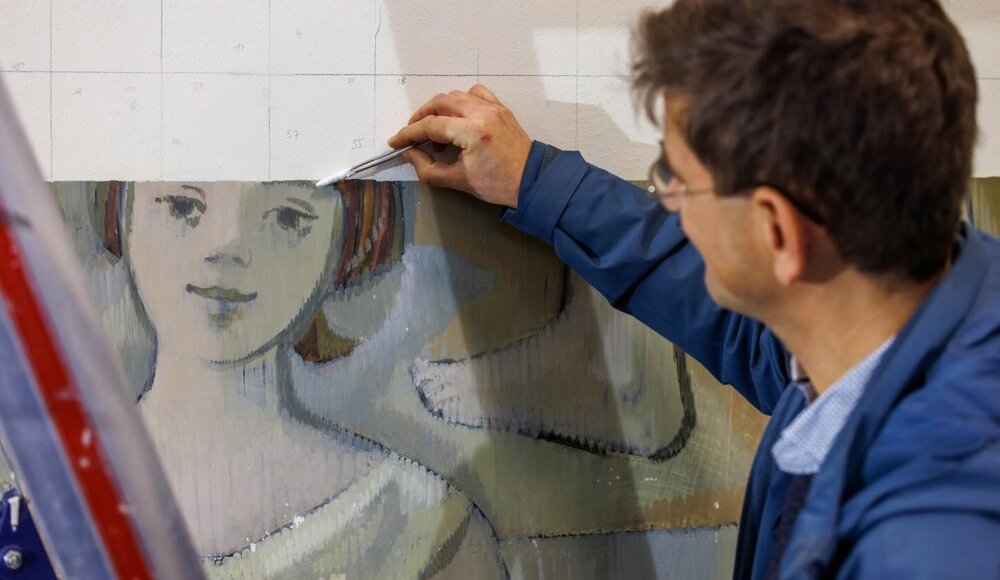A once-hidden masterpiece by Gerhard Richter, initially obscured in 1979, has reemerged in Dresden. Located within the confines of the German Hygiene Museum, this rare early creation stands within a stairwell and entrance hall, marking its survival through decades. Nearly half a century after being concealed, Richter's student artwork from his time at the Dresden University of Fine Arts is slated for renewed public exhibition.
Originally crafted in 1956 within the museum's architectural spaces, Richter initially declined the museum's 1994 offer to unveil and showcase the artwork, deeming the mural as non-essential. However, his stance softened by 2022, nearly three decades later.
Approaching his 92nd birthday, Richter's perspectives have shifted, as noted by Dietmar Elger, director of the Gerhard Richter Archive. Despite Richter's selective acknowledgment of his official works beginning in 1962, this particular mural, "Lebensfreude" (Joy of Life), depicting vibrant, everyday scenes, endured past his self-imposed artistic purge post-East Germany escape in 1961.
Scheduled for gradual exposure, starting with a family scene on a beach, the museum contemplates revealing more sections based on structural integrity, post-initial assessment expected by October.
Richter's early embrace of Socialist Realism, mandated by East Germany's communist authorities, reflects in this mural. Despite later distancing from such enforced artistic norms following his 1959 exposure to broader Western art forms and subsequent defection in 1961, this work contributed to his academic and creative foundation.
The mural's overpainting in 1979 symbolized East German officials' dismissal of its artistic value. Yet, from March 9, spectators can observe restoration efforts through a transparent barrier, aligning with an exhibition revisiting the museum's communist-era narrative.
Founded initially by a dental hygiene entrepreneur in 1912, the German Hygiene Museum now rebrands as a beacon of human experiences, with the mural's €220,000 restoration supported by multiple foundations and institutions, weaving a tale of artistic endurance, political change, and cultural memory.


 Jean Dubreil
Jean Dubreil